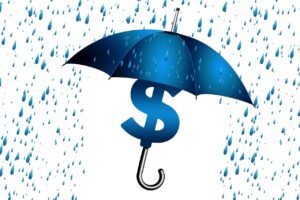Contents
- 1
- 2 Introduction
- 3 Analyze your coverage
- 4 Shop around
- 5 Ask for a rate review
- 6 Consider raising your deductible.
- 7 Switch from full coverage to liability only (if you can afford it)
- 8 Teenagers are at a higher risk of getting into an accident, so their auto insurance premiums will be higher than those of other drivers. However, it is possible to save money on auto insurance for teenage drivers by analyzing your coverage, shopping around for a cheaper policy, asking for a rate review, and considering raising your deductible amount.
- 9 Conclusion
Introduction
For most of us, driving is a necessity. We need it to get to work and run errands, so we can’t just stop driving when it becomes too expensive. But if you have a teenage driver in your household who has just gotten their license, there may be opportunities for both of you to cut back on auto insurance premiums. While teenagers are at higher risk for accidents due to inexperience behind the wheel, they can save money on auto insurance by analyzing their coverage options and shopping around for cheaper policies. They can also raise their deductible amount or switch from full coverage to liability only (if they can afford it).
Analyze your coverage
It’s important to think about the kind of coverage you need for your teen driver. If they’re just learning how to drive, then liability insurance should be enough. If your teen has their license and has been driving for a while, it might be time for them to add comprehensive and collision coverage as well.
It may also help if you consider buying a high deductible so that if something happens with the car while they’re driving it, there’s less money out of pocket on accident-related expenses such as repairing dents or fixing broken windows and tires–which could save hundreds per year in premiums!
You should always ask for rate reviews every few years; this way, any changes in state laws or new discounts can be applied automatically without having to call in each time (and possibly pay more than necessary). And don’t forget: there are plenty more ways teens can save money on auto insurance by making smart decisions behind the wheel!
Shop around
The first thing you can do to save money is shop around for quotes. There are a lot of insurance companies out there and they don’t all offer the same prices or coverage options. Compare the policies offered by different companies and find one that fits your needs at an affordable rate. If you have friends or family members who have experience with auto insurance, ask them if they have any recommendations for good companies in your area; this will help ensure that they aren’t just trying to get you signed up with their own company! Also look out for discounts on safe driving, good grades (if applicable) and multiple policies (e.g., homeowner’s).
Ask for a rate review
You can also ask your agent to review your auto insurance rate. By doing this, you may be able to save money on auto insurance.
You might qualify for a discount if you have a good driving record or multiple policies with the same company.
Consider raising your deductible.
Raising your deductible is one of the easiest ways to save on auto insurance. A higher deductible means you pay more out-of-pocket for repairs, but it also means that you’ll pay less in premiums each month.
The amount of money that should go toward your deductible depends on how much risk your teen driver poses and how much money you have available to set aside for repairs. If a large repair bill would leave you struggling financially, then consider keeping the deductible low (or even dropping collision coverage altogether). But if this isn’t an issue, consider raising it so that you can lower premium costs elsewhere.
To keep things affordable while still keeping up with rising costs, shop around every six months or so–or whenever something significant happens with their car’s maintenance needs (like getting new tires).
Switch from full coverage to liability only (if you can afford it)
When purchasing auto insurance for a teenager, there are two main types of coverage: full coverage and liability only. While full coverage is more expensive than liability only, it’s important to remember that the cost will be less than what you would pay if your teen caused an accident and didn’t have any insurance at all. In this scenario, you would be responsible for paying out-of-pocket for any damages they caused–and those costs could add up quickly!
If you can afford it and don’t mind paying extra (or if your state requires it), then go ahead and get yourself some full coverage; otherwise, consider switching over to liability only when possible. This type of policy usually costs less than half as much as its counterpart because it doesn’t include any other types of protection like medical payments or property damage protection (PDP). However, unlike PDP plans which cover collision repairs on both parties involved in an accident regardless who caused them (so long as one party had PDP), “no fault” states like Florida require drivers under age 18 who cause accidents involving injuries or death must carry at least $10K/$20K/$10K respectively in bodily injury liability limits plus $10K/$20K/$5K combined property damage limit per incident before they can drive again after being suspended due to unsafe driving habits such as speeding tickets
Teenagers are at a higher risk of getting into an accident, so their auto insurance premiums will be higher than those of other drivers. However, it is possible to save money on auto insurance for teenage drivers by analyzing your coverage, shopping around for a cheaper policy, asking for a rate review, and considering raising your deductible amount.
You may be able to save money on auto insurance for teenage drivers by analyzing your coverage, shopping around for a cheaper policy and considering raising your deductible amount.
Teenagers are at a higher risk of getting into an accident than other drivers, so their premiums will be higher. However, it is possible to save money on auto insurance for teenage drivers by analyzing your coverage and shopping around for a cheaper policy. You can also ask for a rate review if you’re not happy with the rate increase after adding another driver or buying new vehicles in the household.
Conclusion
There are many ways to save money on auto insurance for teenage drivers. The most important thing to remember is that it’s not worth getting into car accidents if it means paying higher premiums in the future. If you’re able to avoid accidents and keep clean records, then there are many ways that you can lower your premiums by shopping around or asking for rate reviews from different companies.



Average Rating